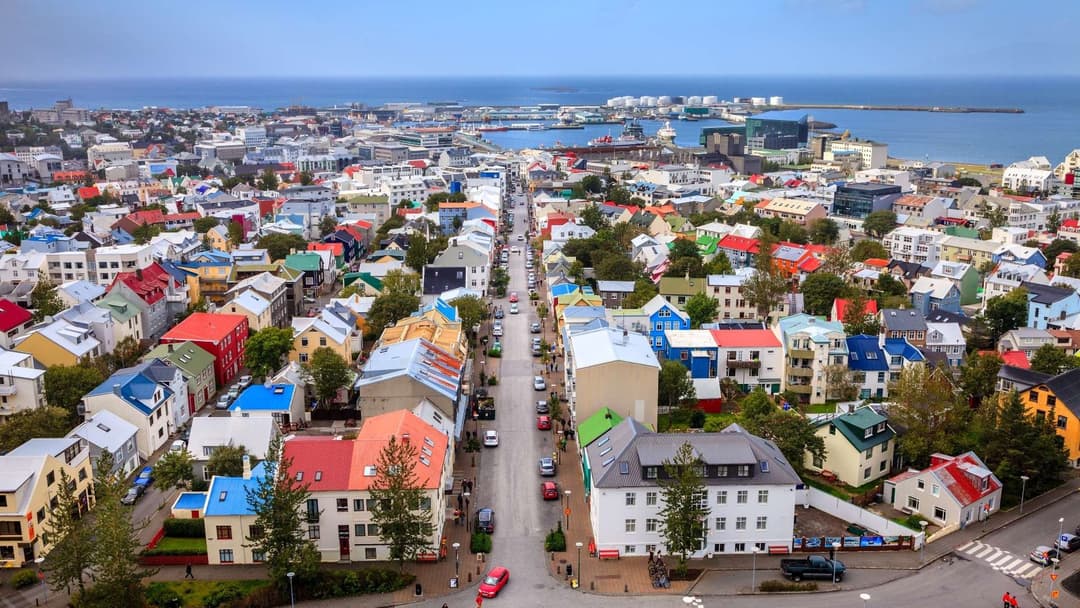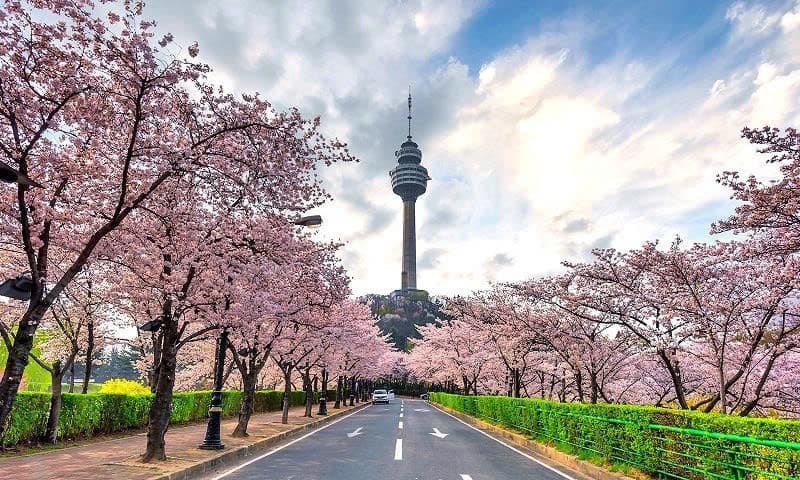

Overview of Iceland
Iceland, also known as the "Land of Ice," is an island located between the Norwegian Sea in Northern Europe. Iceland is one of the youngest islands on Earth in geological terms, formed about 20 million years ago by a series of volcanic eruptions and still experiencing volcanic activity to this day. It is also the location of the rift separating the Eurasian and North American tectonic plates. For this reason, Iceland is often referred to as the land of Ice and Fire.
Best Time to Visit
Iceland has a rather unique climate with cold weather and strong winds throughout the winter, while summers are relatively cool.
Summer (June to September): This is the time when the sun shines brightly, and in early June through July, you can witness the Midnight Sun, where it remains light 24 hours a day, giving you plenty of time for exploration. During this time, you can go hiking, trekking, visit the island's central regions, which are only accessible during this period, see whales, puffins, explore unique volcanoes, and experience the island filled with vibrant lupine flowers, yellow and white wildflowers, making the landscape more lively and colorful compared to the usual grey volcanic rocks and lichens.
Winter (October to March): If you're keen on visiting ice caves, seeing the Northern Lights, and witnessing a snow-covered Iceland like a fairy tale, then winter is the time to go. October is considered the best month to see the Northern Lights.
Transportation
HeyoTrip provides flight services across the country. Contact HeyoTrip.com to get to where you want to go!
To save on costs:
Book your tickets early: Flight prices are often cheaper when booked several months in advance.
Be flexible with travel dates: Weekdays are typically cheaper than weekends.
Local Transportation
In Iceland, you can only travel via tours or by renting a car. Due to the specific climate and terrain, public transportation is not widely developed.
You should carefully consider road conditions, as in winter, snow can accumulate heavily, and the roads can be very difficult to travel on.n.
Tourist Attractions
Reykjavik - The Capital
Reykjavik is the capital and cultural hub of Iceland. Here, you can see the moon in winter and the sun appearing at midnight. You can also witness the Northern Lights—one of the most wonderful natural phenomena in the world—when dawn starts to break. Reykjavik is a vibrant and colorful city that will leave you with unforgettable memories

Jokulsarlon Glacier Lagoon
Jokulsarlon Bay is a freshwater lagoon located in the south of Iceland, formed by melting glaciers.
Iceland is famous for its spectacular and colorful Northern Lights. According to many previous travelers, the best time to view the Northern Lights is between August and October, especially at Jokulsarlon Glacier Lagoon, where you can see colorful light strips twisting across the night sky.
The Northern Lights are a rare optical phenomenon that showcases the magical and enchanting beauty of nature. Not many places around the world offer the chance to witness them, so many people choose to visit Iceland just to see this spectacle. You should book tours, rooms, and flights early to secure your spot.

Blue Lagoon Hot Springs
Iceland is home to many natural hot springs. The Blue Lagoon is a famous spa resort with mineral-rich, turquoise-colored water filled with minerals and silica.
You will feel incredibly relaxed and refreshed while soaking in the hot waters of the Blue Lagoon, which not only brings relaxation but also rejuvenates and revitalizes your skin after hours of exploring Iceland's wild beauty.

Hverir Geothermal Area
Hverir, a tropical area located at the foot of the Namafjall Volcano, is one of Iceland’s unique and fascinating destinations. When you arrive, you will face a significant challenge: the overpowering smell of sulfur from the hot springs, mud pits, and gas emissions. The sulfur smell is a characteristic of the island, and you can smell it everywhere, even in the drinking water. However, at Hverir, the sulfur smell is particularly strong.
This may cause discomfort and hinder your ability to enjoy the beauty of the area. But if you can overcome this barrier, you will witness a mesmerizing and surreal landscape that feels like stepping into another world. The vibrant, diverse colors of the land, rocks, water, and smoke give you a sense of Earth's vitality.
Hverir is often referred to as the "Paradise of Illusory Scenery." You must visit this place to experience its various landscapes, such as the sulfuric mud pools. If you continue further, you’ll find lush green meadows. It’s truly magnificent!

Things You Must Know Before Visiting Iceland
Before you head to Iceland, remember the following:
Expensive food: You may think cities like Paris or New York are expensive, but Iceland is even pricier. A typical meal in major European cities is considered a rare delicacy in Iceland, with prices around $50 USD for such a meal. If you plan to travel independently in Iceland, be sure to have a well-planned budget.
Water smells like rotten eggs: Yes, Iceland’s water contains sulfur. However, it’s still safe to boil and drink.
Sunlight is a luxury: You’ll be astonished to learn that the sun rises at 6:30 AM and sets at 9:30 AM in Iceland. Therefore, pay close attention to the sunlight hours when planning your itinerary.
Iceland, also known as the "Land of Ice," is an island located between the Norwegian Sea in Northern Europe.



